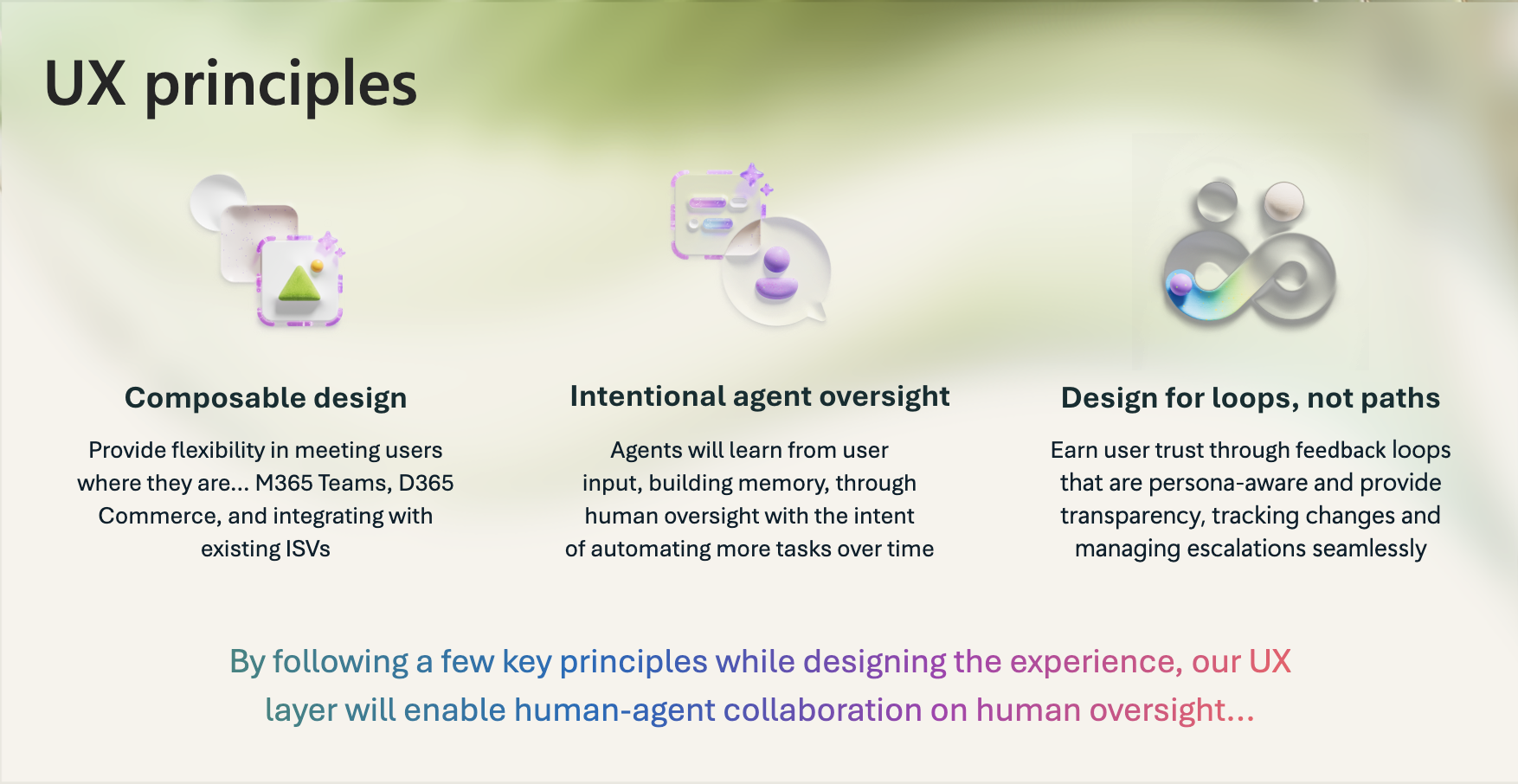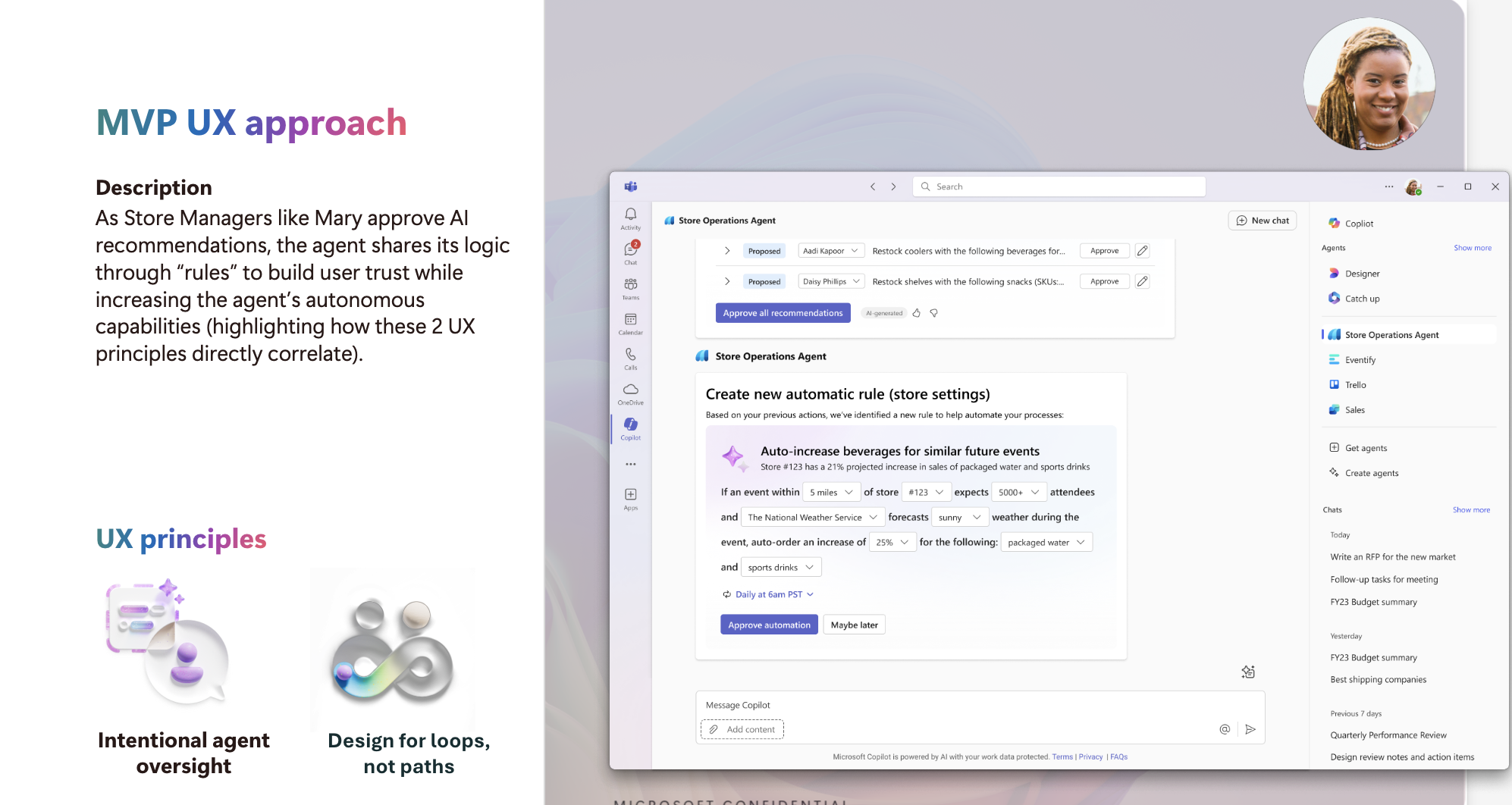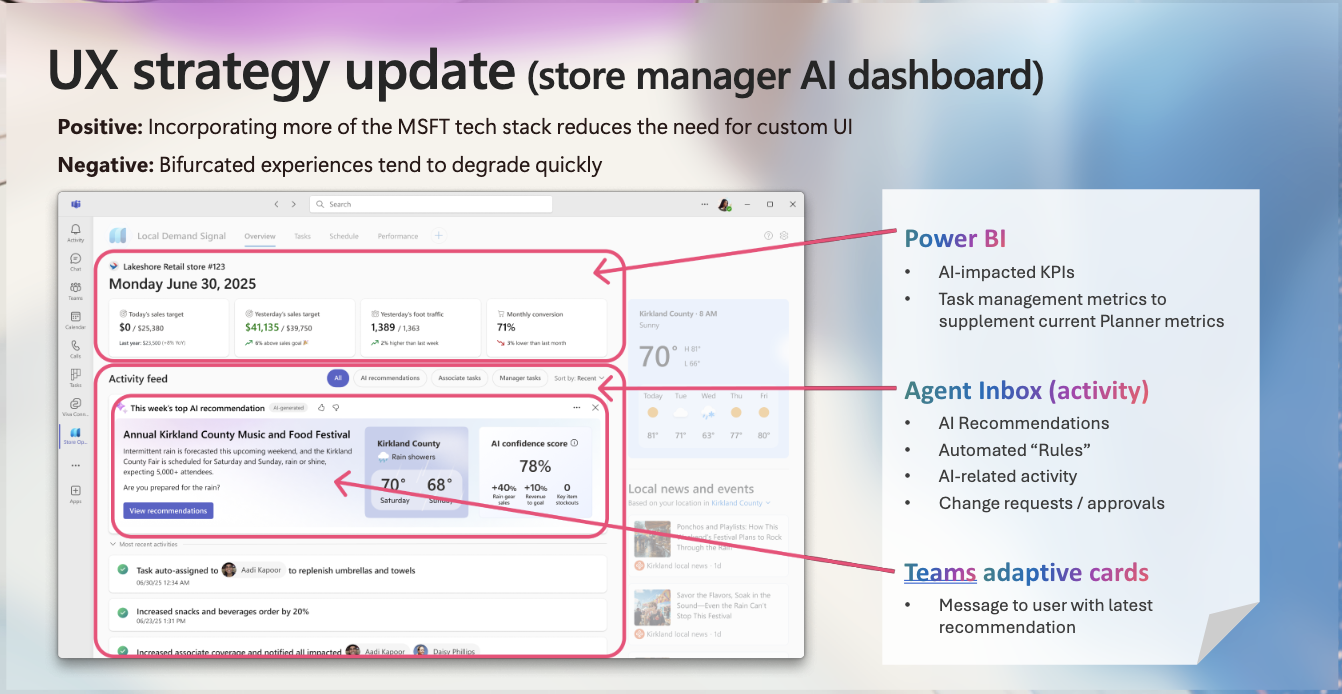Local Demand Agent for Store Operations
MICROSOFT | 2025
*0 to 1 product
Created a human-in-the-loop AI experience that empowers retail store managers to anticipate local demand shifts, act on agent recommendations, and build trust through transparent oversight.
Project Overview
Title: Local Demand Agent
My Role: UX Lead
Team: Product Manager, UX Researcher, and Engineering Team
Duration: Ongoing
Impact:
Retailer Value: Proactive responses to demand shifts = reduced stockouts, improved sales.
Customer Value: Higher satisfaction with better-stocked stores during local events.
Operational Efficiency: Automated inventory orders, staff scheduling, and task management.
Microsoft Value: Strengthened retail proposition with D365 + Teams integration; positioned for Public Preview at NRF 2026.
Context & Problem Definiton
Background: Retailers need to anticipate local demand (weather, events, holidays) and respond proactively. Manual workflows slowed reaction time, reduced efficiency, and missed revenue opportunities.
Target Users: Retail store associates and store managers
Problem Statement: How can we design an AI-driven assistant that helps managers act proactively without adding to their task load or violating labor compliance?
Constraints:
Finding a Customer 0 to test the end-to-end prototype and scenario with
Switching to another team before completing this agent
Process & Explanation
UX Principles
Creating UX principles provided a clear foundation for designing a trustworthy, human-in-the-loop AI experience.
Principles like composable design, intentional agent oversight, and feedback loops ensured consistency across decisions, aligned the team on how the agent should interact with users, and built the transparency and trust needed for adoption.
Persona Development
Creating personas grounded the AI agent design in the real needs of store managers, associates, and regional leaders.
By mapping out their jobs-to-be-done (JTBD), we identified pain points, prioritized which workflows to support, and ensured the Local Demand Agent delivered value without adding unnecessary complexity.
Personas aligned the team around user goals, helping us design experiences that earned trust and fit seamlessly into daily retail operations.
MVP User Journey
Creating an MVP user journey allowed me to map out how store managers would interact with the Local Demand Agent step by step, from receiving a recommendation to giving feedback that improves future automation.
This journey clarified the balance between human oversight and agent autonomy, aligned the team on the core experience to test first, and ensured that early prototypes focused on building user trust while proving value quickly.
MVP UX Approach
To design the first iteration of the MVP UX approach, I combined the UX principles, personas, and MVP user journey into a cohesive framework. The principles of composable design, intentional agent oversight, and designing for loops guided every design decision, ensuring transparency and trust in the AI.
Personas of store managers and associates grounded the work in real retail workflows and pain points, keeping the experience relevant and usable. Finally, mapping the MVP user journey clarified how the Local Demand Agent should interact with managers step by step, balancing human oversight with gradual automation.
Together, these inputs shaped the first prototype screens—bringing recommendations into Teams, enabling approvals in Planner, and introducing feedback loops so the agent could learn over time.
MVP User Testing
User testing the MVP was critical for validating comprehension, usability, and relevance with real store managers and an industry expert.
It revealed that trust, ROI, and alignment with real workflows were essential for adoption, and reinforced that the agent must not add to managers’ workload or bypass labor laws.
Feedback on AI reasoning, integration with broader operations, and the need for human oversight guided refinements to ensure the Local Demand Agent delivered value while maintaining transparency and user control.
Adaptive Card Variations
Iterating on the design to create different scenario variations was essential for testing how the Local Demand Agent should communicate recommendations across a range of use cases.
By exploring single vs. multiple events, weather impacts, hierarchical views, and automation rules, I was able to validate what information users needed, how much complexity they could handle, and where transparency was critical for building trust.
These iterations not only revealed the best ways to present recommendations but also ensured the design could flex to different retail contexts without overwhelming store managers.
Updated UX Strategy
I updated the UX strategy to reduce reliance on custom UIs and instead leverage Microsoft’s existing ecosystem (Teams, Power BI, Planner). This shift allowed the Local Demand Agent to scale more easily, integrate into tools managers already used, and reduce design and development overhead.
By evolving the North Star vision, I explored how AI recommendations, KPIs, and agent oversight could be surfaced through adaptive cards, dashboards, and an Agent Inbox. This approach balanced efficiency with scalability—while also uncovering potential blockers like the need for detailed views to maintain transparency and trust.













